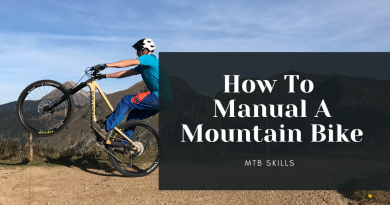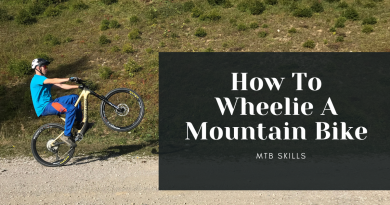How To Do The Attack Position | MTB Skills
The attack position is one of the first skills any mountain biker should learn. This is because the attack position is the base for most other skills on a mountain bike. It helps build stability, improve turning confidence, and helps to put you in the correct position to react to any challenging obstacles. The attack position should always be the default position on a mountain bike – this. is the same for beginners and advanced riders!
Study this simple post if you want to learn the most simple skill to take your riding to the next level:
What is the attack position in MTB?
The attack position on a mountain bike to put simply means ‘standing up on your pedals with your knees slightly bent, head directly above the handlebars and your elbows stick out from the line of the handlebars.
How do you practice the correct attack position?
You will need:
- A friend to help you hold your bike, or you can balance your bike against a wall (although that can be a little more tricky).
- A bike that’s the correct size for your height/size
- Helmet, knee elbow/pads it’s important to get into the habit of wearing a helmet and pads when mountain biking

Step 1 Stand on the pedals
Start by standing up on the pedals with a friend or wall supporting the bike. Try to keep the pedals almost level with your heals slightly below the pedal axle. Aim to have around 60% of your weight over the pedals.
Step 2 Position elbows wide directly above the handlebars
Stand with your elbows bent wide directly above the handlebars. Aim to Place around the other 40% of your weight over the handlebars, this will help the front wheel to get traction in turns and give you a solid position on the bike for any obstacles coming up.
Step 3: Keep arms and knees bent
Keep your knees away from the frame; try to have them run parallel with your pedals. This will help improve balance and give more space when turning. Keeping your arms and knees slightly bent to help absorb bumps.
Step 4: Look ahead
One of the simplest, but most effective ways to improve your riding is to remember to keep looking ahead down the trail and not down at your front wheel. This will help you prepare for the terrain and avoid any nasty surprises. Remember the faster you ride, the less stopping time you have, so you will need to look even further ahead down the trail.
Step 5: Always cover the brakes with 1 finger
Aim to have both your left and right hand covering the brakes with one finger, most people use their index finger. Modern brakes are powerful enough to only need one finger. This will help prepare you to brake quickly if needed, and will also give you 4 fingers on the grips which will help give you good control of the bike.
Tip: Remember Don’t fixate on hazards
When you spot a hazard, loose rock or tree, try to focus on where you want to go and not on the hazard itself. Your bike will normally follow the line of your gaze, so if you’re looking directly at a hazard, that’s likely where you’ll end up.
Attack position questions
When should you use the attack position on the mountain bike?
The attack position on a mountain bike should always be used as a default position. This means when you are not riding roots, rocks, jumps, or drops etc, you should quickly default straight back into the attack position. The attack position is a great base position, it helps prepare you for any obstacles which may lay ahead.
Should you use the attack position in corners?
The attack position is not meant to be used for turns. However, it’s often good to transfer from the attack position into the subtlety different position needed for the specific type of turn.
Is the attack position on a mountain bike just for beginners?
The attack position on a mountain bike is not just for beginners, it’s used by riders of all abilities, which is why it’s important to master at the beginning. You will notice that some of the most skilled riders in the world will only make slight alterations from the attack position the entire way down the trail.
What is the best riding position for a mountain bike?
The best riding position for a mountain bike depends on what you are riding. The attack position is a good default/neutral position on the bike. However, if for example, you are riding steep trails you will most likely need to get your weight further over the back wheel.
Now get out and practice how to do the attack position correctly. If you are unsure, ask a friend to take some pictures of you, this should help you correct any issues you could be having.
If you have found this tutorial helpful you may also like:




